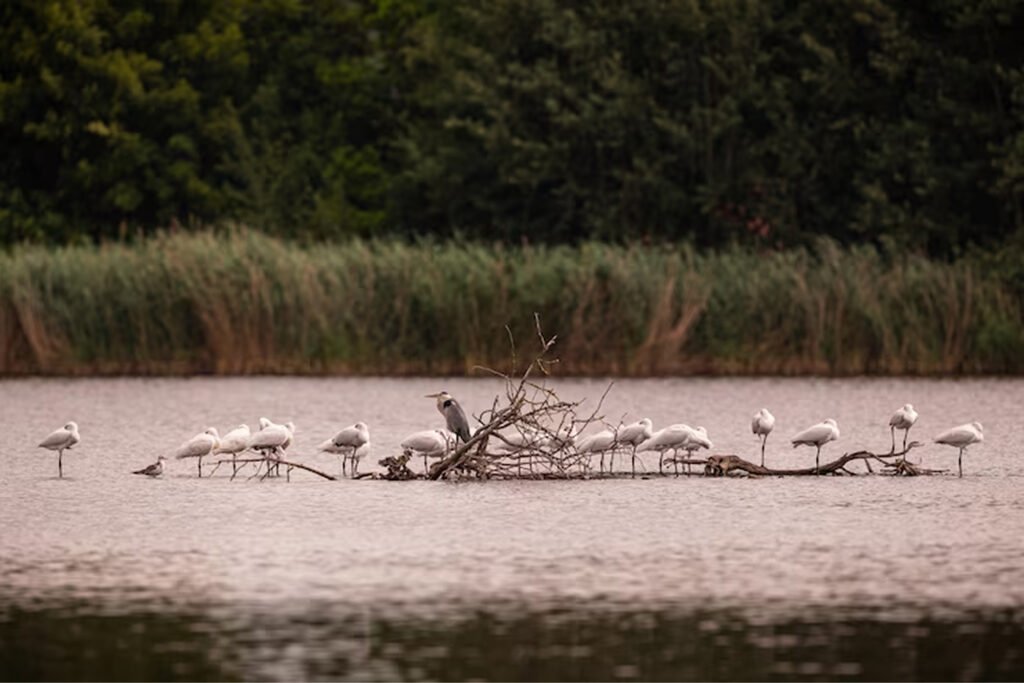“Are we doing enough to ensure the safety and well-being of migrating birds?” As many feathered travelers journey across continents, stopovers become crucial points for rest and refueling. By reimagining our gardens and yards as welcoming refuges, we can play a vital role in supporting these avian voyagers. Learn how native plantings, bird-friendly gardening, and simple habitat modifications can transform your outdoor space into a sanctuary. Join us as we explore practical techniques to help migrating birds not just survive, but thrive during their stopovers.
Providing Essential Food and Water Sources for Migratory Birds
Why do migrating birds need diverse and nutritious food sources? Birds on migration must double their body weight to replenish the fat reserves essential for their long flights. Offering a variety of foods is vital. Foods such as millet blends, sunflower hearts, peanuts, suet, hempseed, and fresh fruit cater to different dietary needs and provide the necessary energy, protein, and fats. Bird feeders play a significant role in this process by supplying easily accessible food. Ensuring that feeders are clean and well-maintained is crucial. Contaminated feeders can spread diseases among bird populations, directly impacting their health and survival. By keeping them clean, individuals can significantly support the nutritional needs of visiting migratory birds.
| Food Type | Nutritional Benefit |
|---|---|
| Millet Blends | High in carbohydrates for energy |
| Sunflower Hearts | Rich in fats and proteins |
| Peanuts | Provide essential oils and proteins |
| Suet | High-calorie fat source |
| Fresh Fruit | Vitamins and natural sugars |
What is the significance of providing fresh and clean water for migrating birds? Access to clean water is as critical as food for birds during their stopovers. Water sources like birdbaths or small ponds offer hydration, which is vital for digestion and maintaining body temperature. During migration, birds may face dehydration, especially in areas with limited natural water availability. Keeping these water sources clean prevents the spread of waterborne diseases and ensures that birds have access to safe drinking water. By providing clean water, bird enthusiasts can make a significant impact on the well-being of migrating birds as they pause to rest and refuel.
Understanding Migratory Bird Behavior and Needs
What behavior patterns do migratory birds exhibit during stopovers? Migratory birds often engage in behaviors aimed at rapidly replenishing their energy stores. These behaviors include foraging for high-energy foods and resting to conserve energy. During stopovers, birds need to double their body weight to restore the fat reserves essential for their long flights. This intense period of feeding is crucial, as it impacts their survival and ability to reach their destinations. Birds meticulously select stopover locations that provide abundant food resources and safe resting spots, demonstrating an acute awareness of their immediate needs and the environment.
- Emergency Stops: Used during adverse weather or unexpected fatigue, providing immediate shelter and basic resources.
- Short Stays: Sites offering quick access to food and water for a brief recharge before continuing migration.
- Full-Service Rest Areas: Locations abundant in food and safe resting places, allowing birds to fully replenish energy reserves.
- Urban Greenspaces: Parks and gardens providing essential stopovers amidst city landscapes, facilitating quick refueling.
- Wetlands: Rich in diverse food sources, these areas offer excellent refueling and resting opportunities for various species.
How do these behaviors impact stopover site selection? The need for specific resources and safe resting conditions greatly influences the choice of stopover sites. Birds prioritize areas that fulfill their dietary and safety requirements, as these factors are critical for successful migration. Stopover sites offering ample food, water, and shelter become preferred destinations, ensuring birds can adequately prepare for the next leg of their journey. Understanding these behaviors and needs highlights the importance of preserving and enhancing such habitats, emphasizing their role in supporting migratory bird populations.
Final Words
In transforming gardens and yards into welcoming stopover habitats, readers learned the significance of native plants and sustainable gardening practices. Providing diverse foods and clean water supports migrating birds’ energy needs, while steps like reducing window collisions and light pollution can enhance their safety during stopovers. Understanding migratory bird behaviors aids in selecting suitable stopover sites. Engaging in conservation efforts at local levels protects essential habitats. By embracing these steps, individuals can effectively learn how to help migrating birds during stopovers, contributing to their survival and well-being.
FAQ
How can we help migrating birds during stopovers at home?
Individuals can support migrating birds by planting native vegetation, offering fresh water, and ensuring feeders are clean. Creating brush piles and leaving natural plant materials can also attract ground-feeding birds.
What actions can protect migratory birds from extinction?
Protecting migratory birds involves creating bird-friendly habitats, reducing hazards, and supporting conservation efforts. Implementing sustainable gardening practices and participating in community conservation projects can make a significant impact.
What are stopover sites, and why are they important?
Stopover sites are locations where migratory birds rest and refuel during their journeys. They provide essential food, water, and shelter, enabling birds to build energy reserves necessary for migration.
How long can migratory birds fly without stopping?
Migratory birds can fly for several hours to days without stopping, depending on the species. However, stopover sites are crucial as they provide needed resources to regain energy.
What do migratory birds do to rest while flying?
Some migratory birds can sleep while flying by using one half of their brain to rest, allowing them to remain partially alert and navigate their journey.
How can reducing hazards benefit migrating birds?
Reducing hazards such as window collisions and light pollution can significantly decrease bird fatalities. Keeping cats indoors and using window decals are practical steps to protect migratory birds.
How can individuals support conservation efforts for migrating birds?
People can participate in citizen science projects, support wildlife organizations, and engage in community conservation initiatives. These actions help protect and sustain migratory bird populations.


